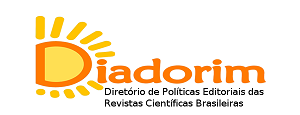THE TEACHING OF GEOGRAPHY AND THE STUDY OF THE BRAZILIAN POPULATION
A work on june festivals from the building of marchines
DOI:
https://doi.org/10.20873/rtg.v11i25.13932Keywords:
Active methodologies, Festa Junina, models, geography teachingAbstract
Nowadays, more and more, the teaching of Geography has the challenge of motivating students to learn, starting from the contextualization of the content with the students' reality. It is not possible to offer a banking education as Paulo Freire says, that is, a repetition of concepts, as it no longer pleases students. Geography is essentially interconnected with the location and can be worked on in different approaches. Thinking about teaching the regional diversity of the culture of the Brazilian population, we sought to propose a didactic practice that dialogues with the June content and festivals, proposing the construction of models, to signal knowledge and bring the student to class, for their learning through active methodologies. The pedagogical intervention took place in June 2020, with students of the 7th year of Elementary School at the Municipal School of Elementary School Professor Cândida Zasso from Nova Palma - RS. With the activity it was possible to observe the interest and participation of the students, the creativity and content of the productions and, finally, to articulate the teaching of Geography with their reality.
References
BRASIL, Secretária de Educação Fundamental. Parâmetros curriculares nacionais: geografia. Brasília: MEC/SEF, 1998.
BECKER, F. Educação e construção do conhecimento. Porto Alegre: Artmed Editora, 2001.
CALLAI, H. C.. A geografia e a escola: muda a geografia? Muda o ensino?. Revista Terra Livre, São Paulo, n. 16. p. 133-152, 2001.
CASTELLAR, S. V. A cartografia e a construção do conhecimento em contexto escolar. In: ALMEIDA, R. D. (org.) Novos rumos da cartografia escolar: currículo, linguagem e tecnologia. São Paulo: Contexto, 2011.
CASTROGIOVANNI, A.C. Apreensão e compreensão do espaço geográfico. In: A.C. CASTROGIOVANNI; H.C. CALLAI; N.A. KAERCHER. Ensino de Geografia: práticas e textualizações no cotidiano. Porto Alegre, Mediação, p. 81-93. 2000.
CASTROGIOVANNI, A. C. O misterioso mundo que os mapas escodem. In: CASTROGIOVANNI, A. C. [et al.]. (Org.) Geografia em sala de aula: prática e reflexões. 5. ed. Porto Alegre: Editora da UFRGS, AGB, Secção Porto Alegre, p. 31-48, 2010.
CAVALCANTI, L. de S. Geografia, escola e construção de conhecimentos. 4. ed. Campinas: Papirus, 1998.
COSTELLA, R. Z. Movimentos para (não) dar aulas de Geografia e sim capacitar o aluno para diferentes leituras. In: CASTROGIOVANNI, A. C.; TONINI, I. M.; KAERCHER, N. A. (Orgs.). Movimentos no ensinar geografia. Porto Alegre: Imprensa Livre: Compasso Lugar Cultura, 2013.
FREIRE, P. F. A importância do ato de ler: em três textos que se completam. 3. ed. São Paulo: Autores Associados: Cortez, 1986.
FREIRE, P. Pedagogia da Indignação. São Paulo, Editora Unesp, 2000. 134 p
GEMIGNANI, E. Y. M. Y. Formação de Professores e Metodologias Ativas de Ensino-Aprendizagem: Ensinar Para a Compreensão. Fronteiras da Educação (online), v. 1, 2012, p. 1-27.
KAERCHER, N. A. A geografia é nosso dia-a-dia. Boletim Gaúcho de Geografia, Porto Alegre, v. 21, n. 1,p. 109-116, ago. 1996.
KAERCHER, N. A. Ler e escrever a Geografia para dizer a sua palavra e construir o seu espaço. In: SCHAFFER, Neiva Otero (Org.). Ler e escrever: compromisso de todas as áreas. Porto Alegre: Editora da UFRGS, 1998.
KOLB, D. A. Experiential Learning: Experience as the Source of Learning and Development. Englewood Cliffs: Prentice-Hall, 1984.
MANFIO, V. A contextualização do espaço urbano e rural a partir da construção de desenhos e maquetes em sala de aula. Geografia em Questão, V.08, N. 01, pág. 76-90 76, 2015.
MORMUL, N. M. As Abordagens sobre População na Geografia Brasileira (1934-2010): permanências, transformações e rupturas. 2013. 340 f. Tese (Doutorado em Geografia) - Programa de Pós-graduação em Geografia, Universidade Estadual de Maringá/UEM. Maringá. 2013.
MORMUL, N. M.; GIROTTO, E; D. Geografia da população e seus desdobramentos enquanto conteúdo escolar no 7º ano das Escolas Estaduais de Francisco Beltrão – Paraná. Geografia Ensino & Pesquisa, Santa Maria, vol. 19, n. 2, maio/ago. 2015.
MORAES, J. V. de; CASTELLAR, S. M. V. Metodologias ativas para o ensino de Geografia: um estudo centrado em jogos. Revista Electrónica de Enseñanza de las Ciencias, v. 17, n. 2, p. 422-436, 2018.
OLIVEIRA, A. U. A Geografia que se ensina: In. Para onde vai o ensino de Geografia? 9ª Edição. São Paulo, Ed. Contexto. 2005.
PITANO, S. DE C.; ROQUÉ, B. B. O uso de maquetes no processo de ensino aprendizagem segundo licenciandos em Geografia. Educação Unisinos, São Leopoldo, n. 19, v. 2, p. 273-282, maio/agosto 2015.
YAMAMOTO, I. Metodologias ativas de aprendizagem interferem no desempenho de estudantes. 101 f. Dissertação (Mestrado em Administração), Universidade de São Paulo, São Paulo, 2016.
Downloads
Published
How to Cite
Issue
Section
License
Copyright (c) 2022 Tocantinense Journal of Geography

This work is licensed under a Creative Commons Attribution-NonCommercial-NoDerivatives 4.0 International License.
Revista Tocantinense de Geografia does not remunerate any author for the publication of their texts. The contents of the texts published in this journal are the responsibility of the authors.








.png)












